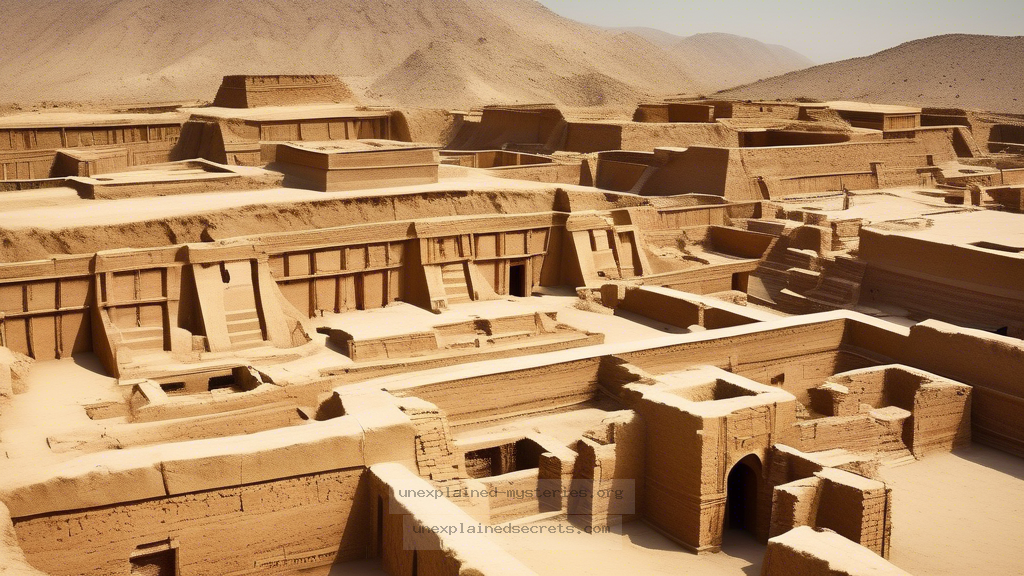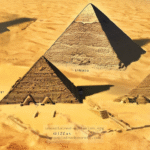What Happened to the Lost Civilization of the Indus Valley?
What Happened to the Lost Civilization of the Indus Valley?
The Indus Valley Civilization, one of the world’s earliest urban cultures, thrived from approximately 3300 BCE to 1300 BCE in what is now Pakistan and northwest India. Despite its advanced urban planning, sophisticated culture, and extensive trade networks, the decline of this civilization remains one of history’s most compelling mysteries. Understanding what happened to the Indus Valley Civilization is not only essential to grasping ancient history but also to comprehend the complexities of societal collapse and resilience. This exploration will delve into the historical context, theories surrounding its decline, and the implications for modern societies.
Historical Context of the Indus Valley Civilization
The Indus Valley Civilization (IVC) was remarkable for its time, featuring well-planned cities like Harappa and Mohenjo-Daro. These urban centers boasted advanced drainage systems, standardized weights and measures, and a form of script that remains undeciphered. The civilization’s peak occurred around 2500 BCE when it covered an area of over 1 million square kilometers, making it one of the largest ancient civilizations. The people of the IVC were skilled in agriculture, metallurgy, and crafts, suggesting a complex, organized society.
However, by around 1900 BCE, the civilization began to decline. This decline is evident in archaeological records, which show a noticeable reduction in urban activity, trade, and population. The reasons for this decline are still debated among historians and archaeologists, sparking numerous theories about the fate of this remarkable civilization.
Theories Behind the Decline
Several theories have emerged to explain the decline of the Indus Valley Civilization. The most prominent among them include:
- Climate Change: Evidence suggests that the region experienced significant climatic shifts, leading to reduced rainfall and prolonged droughts. This would have severely impacted agriculture, which was the backbone of the IVC economy.
- River Dynamics: The Indus River and its tributaries were crucial for irrigation and trade. Geological studies indicate that river shifts and flooding may have disrupted the agricultural systems that sustained urban life.
- Invasion and Conquest: Some historians propose that the arrival of Indo-Aryans or other groups led to the civilization’s downfall through invasion or assimilation, although there is limited archaeological evidence to support this theory.
- Social and Economic Factors: Internal strife, such as social unrest or economic hardship due to resource depletion, might have contributed to the decline, leading to the abandonment of cities.
Archaeological Evidence and Findings
Archaeological excavations have uncovered many artifacts, structures, and remnants from the IVC, providing clues to its daily life and eventual decline. For instance, the discovery of storage facilities indicates that the civilization was well-prepared for trade and resource management. However, as excavations progressed, researchers began to find signs of urban decline, such as abandoned buildings and a lack of new construction.
Moreover, studies of pottery, seals, and tools reveal a decline in craftsmanship and artistic expression over time. These changes suggest a societal shift, possibly reflecting reduced economic stability or social cohesion. The lack of significant warfare artifacts also raises questions about the nature of the civilization’s collapse—whether it was a peaceful dissolution or a more violent transition.
Comparative Analysis: Other Ancient Civilizations
To better understand the decline of the Indus Valley Civilization, it’s crucial to compare it to other ancient civilizations that faced similar fates. For example, the Maya civilization experienced a notable collapse around 900 CE, attributed to climate changes, warfare, and social upheaval. Similarly, the Roman Empire faced decline due to economic troubles and invasions.
| Civilization | Period | Decline Causes |
|---|---|---|
| Indus Valley | 3300 BCE – 1300 BCE | Climate change, river dynamics, social factors |
| Maya | 250 CE – 900 CE | Climate change, warfare, resource depletion |
| Roman Empire | 27 BCE – 476 CE | Economic troubles, invasions, political corruption |
Alternative Perspectives on the Decline
While many scholars adhere to the theories of climate change and invasion, some alternative perspectives challenge the conventional narrative. For instance, some researchers argue that the decline of the Indus Valley Civilization could be viewed through the lens of cultural transformation rather than outright collapse. They suggest that the civilization may have evolved, merging with other cultures and societies, which is a common theme in the history of human civilization.
This perspective posits that rather than disappearing, the people of the IVC may have adapted to new conditions and integrated with incoming populations, leading to a gradual transformation of social structures rather than a sudden fall. Such an interpretation encourages a reevaluation of how we perceive the end of ancient cultures.
Common Misconceptions and Clarifications
Several misconceptions surround the Indus Valley Civilization and its decline. One prevalent myth is that the civilization simply vanished overnight. However, archaeological evidence indicates that the decline was gradual, occurring over several centuries. Another misconception is that the Indus Valley people were entirely peaceful and unarmed; while they may not have engaged in large-scale warfare, evidence of weaponry and fortifications suggests they had means for defense.
Furthermore, the idea that the script of the Indus Valley remains completely undeciphered can be misleading. While there have been no definitive translations, some researchers have made progress in understanding the symbols and their potential meanings. This ongoing research emphasizes the potential for future discoveries to reshape our understanding of this civilization.
Best Practices for Investigating Ancient Mysteries
Investigating ancient mysteries like the decline of the Indus Valley Civilization requires a multifaceted approach. Scholars and researchers are encouraged to use interdisciplinary methods, combining archaeology, anthropology, climatology, and history to gain a holistic understanding. Here are some best practices for studying such topics:
- Collaboration: Working with experts from various fields fosters diverse perspectives and insights.
- Field Research: Conducting excavations and field surveys to uncover new evidence is crucial for understanding historical contexts.
- Technological Integration: Utilizing modern technologies like satellite imagery and ground-penetrating radar can reveal previously hidden sites.
- Public Engagement: Involving the public in archaeological efforts can raise awareness and interest in ancient civilizations.
Future Developments and Ongoing Research
As technology advances and new methodologies emerge, ongoing research into the Indus Valley Civilization continues to yield fresh insights. Recent projects have focused on climate modeling and its impact on ancient societies, utilizing data from paleoclimate studies to draw connections between environmental changes and societal responses.
Additionally, interdisciplinary collaborations have led to more nuanced interpretations of archaeological findings, suggesting that the civilization’s legacy may persist in modern cultures. Future discoveries may further illuminate how the Indus Valley people adapted, survived, or transformed in the face of challenges, continuing to intrigue scholars and enthusiasts alike.
Conclusion
The fate of the Indus Valley Civilization remains shrouded in mystery, with various theories and evidence providing a complex picture of its decline. While climate change, river dynamics, and internal strife are prominent explanations, alternative perspectives suggest a more nuanced understanding of cultural evolution.
As researchers continue to explore this enigmatic civilization, the lessons learned can inform modern societies facing their own challenges. By understanding the past, we can better navigate the complexities of the present and future, highlighting the enduring relevance of ancient mysteries in our contemporary world.
Other Articles
Recent Posts
- What Happened to Flight MH370? The Conspiracy Theories That Still Haunt Us
- What Secrets Lurk Within the Walls of the Infamous Trans-Allegheny Lunatic Asylum?
- What Evidence Supports the Existence of Bigfoot in the Pacific Northwest?
- What Happened to the Indus Valley Civilization? Unraveling the Mysteries of Ancient Urban Life
- Can Telepathy Be Scientifically Proven Through Laboratory Evidence?







